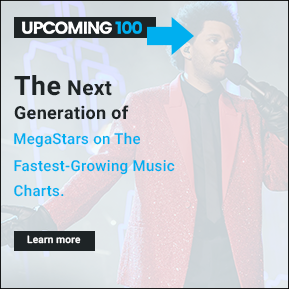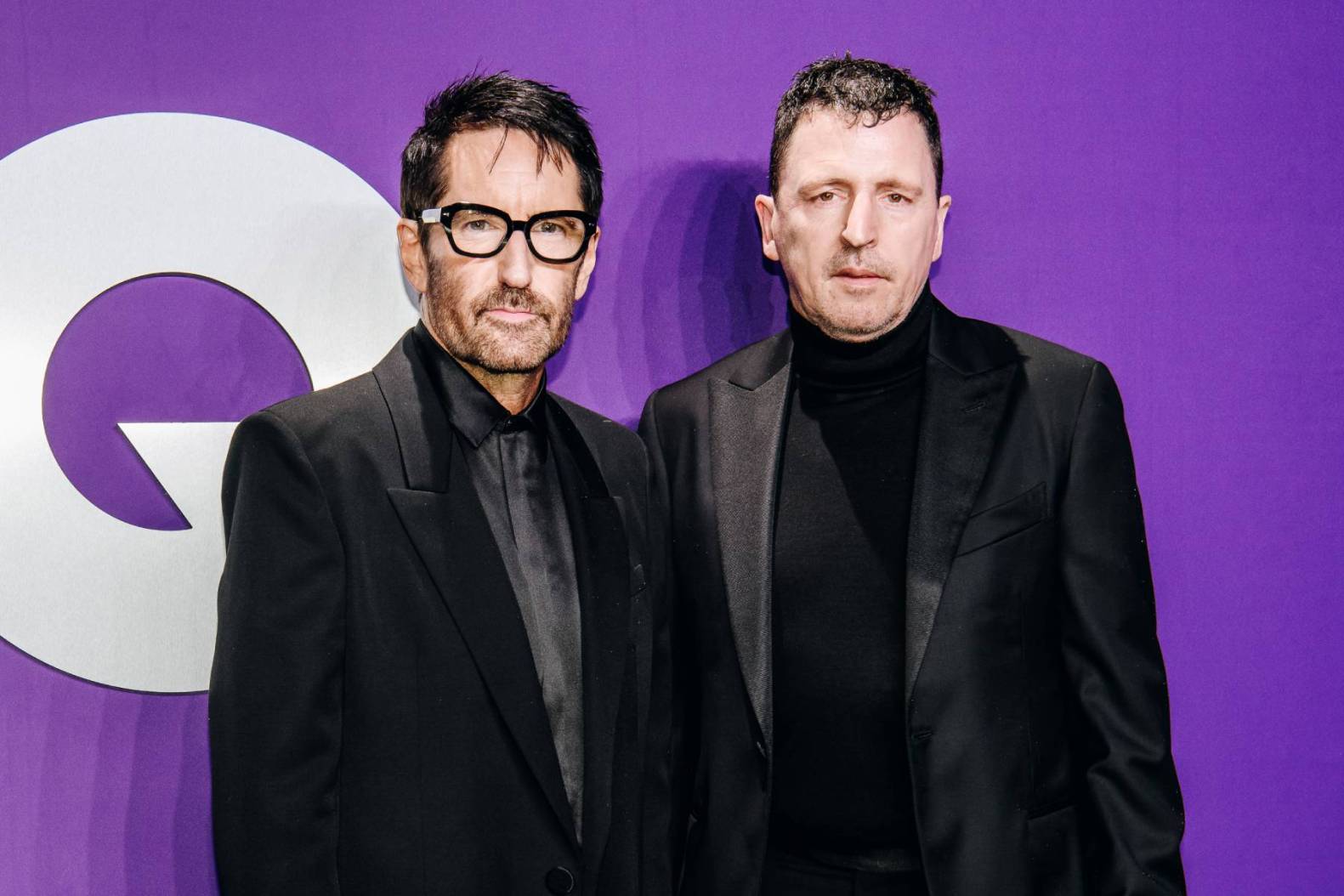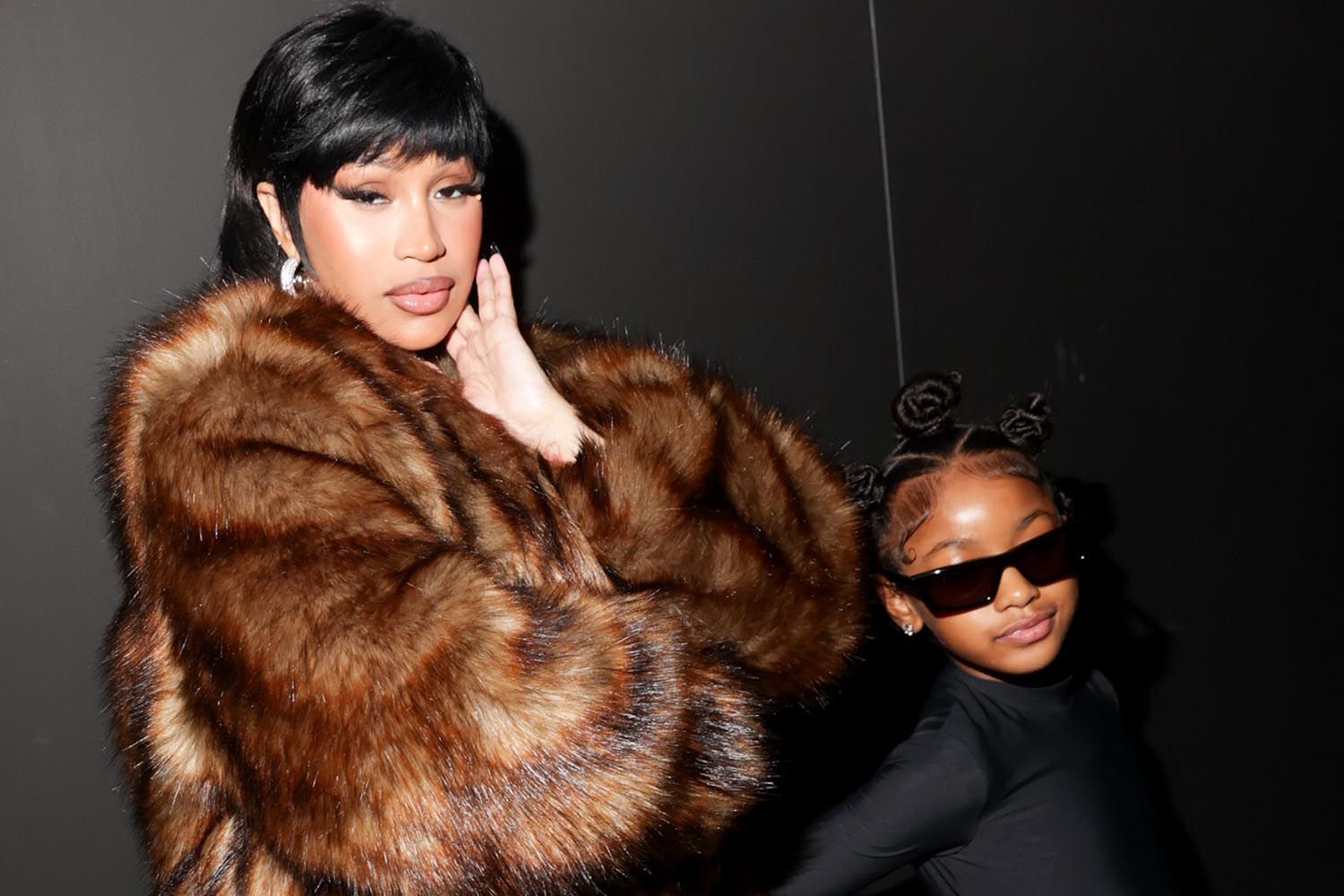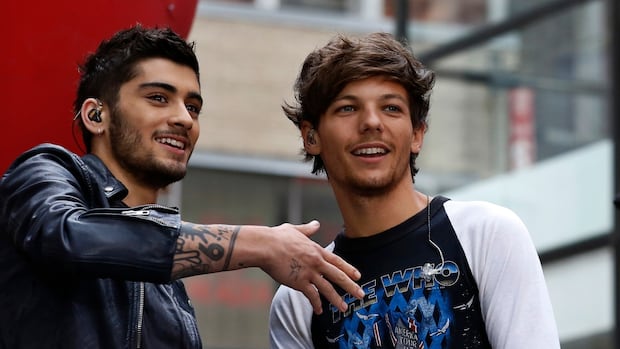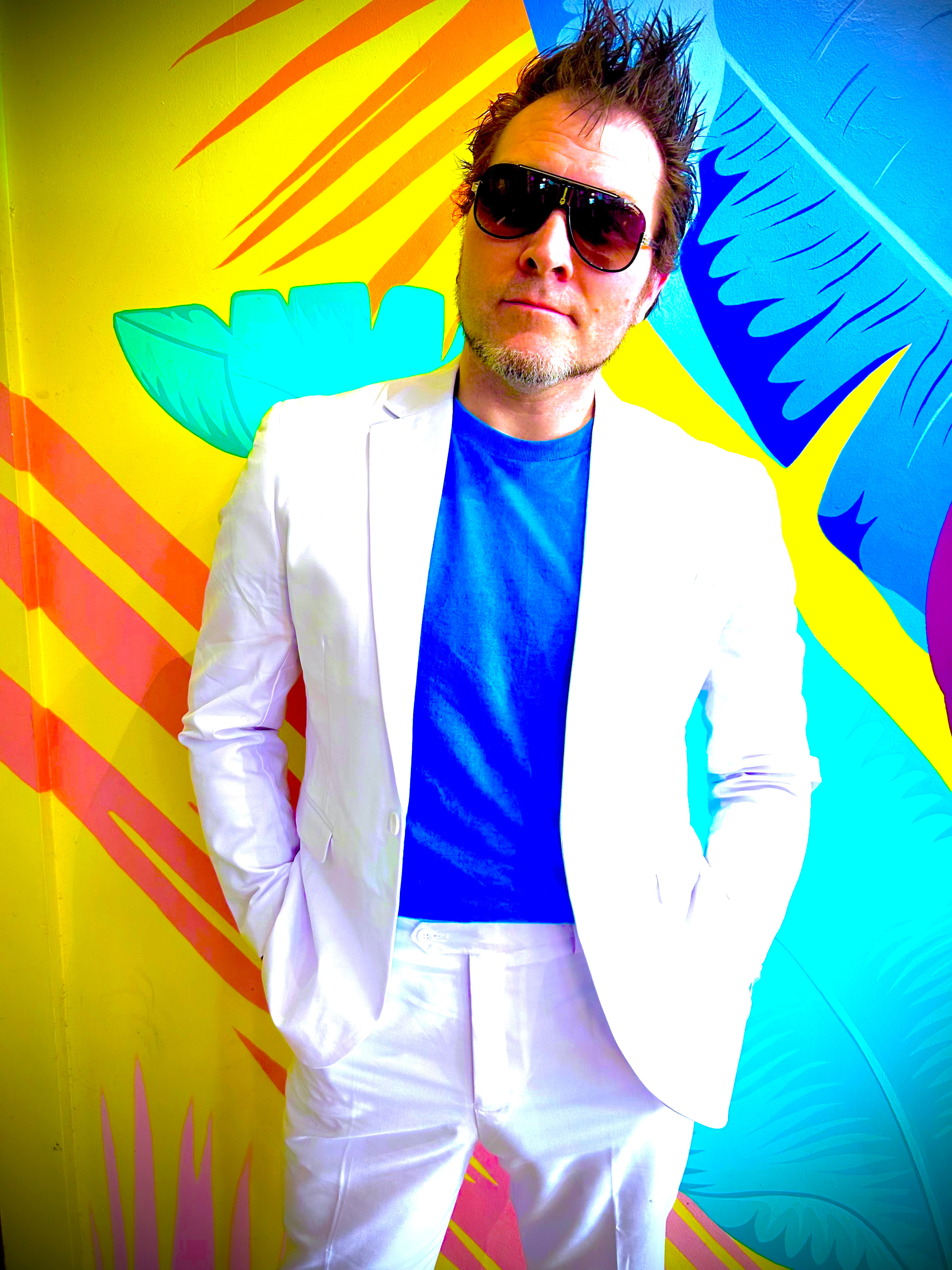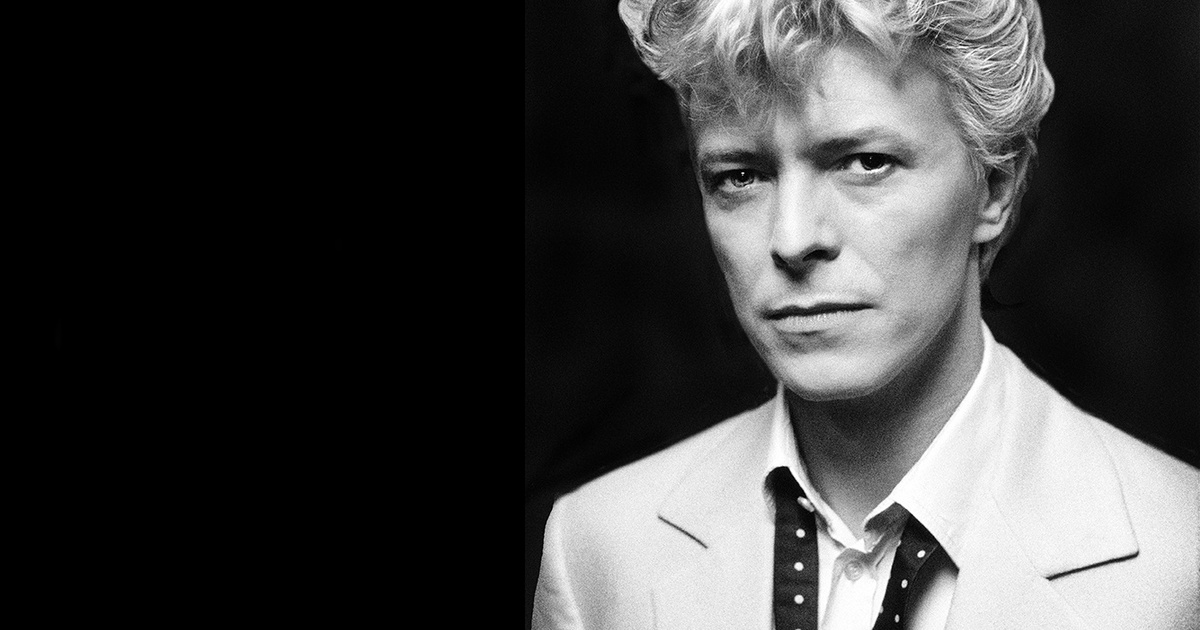
One Saturday in 1974, two girls wandered into the newspaper shop where I worked, laughing as they browsed for pens and paper. They told me David Bowie was across the street at Olympic Studios, recording. I had first seen him a year earlier at the Hammersmith Odeon, just a mile away. I dashed home, grabbed my very first camera, a second-hand Zenit I’d bought from a friend for £5, and hurried back to stake out a spot near the studio steps. Moments later, David’s Lincoln Town Car glided to the curb so quietly that I almost missed it. I was determined not to let that happen again, so I returned the next day better prepared. This time, David remembered me and offered a line I’ve never forgotten: “You should work for NME!” A decade later, “Where’s Denis?” became such a frequent question from David on tour that it turned into an ongoing joke, even winning “catchphrase of the year” at the Glass Spider Tour wrap party in Sydney.
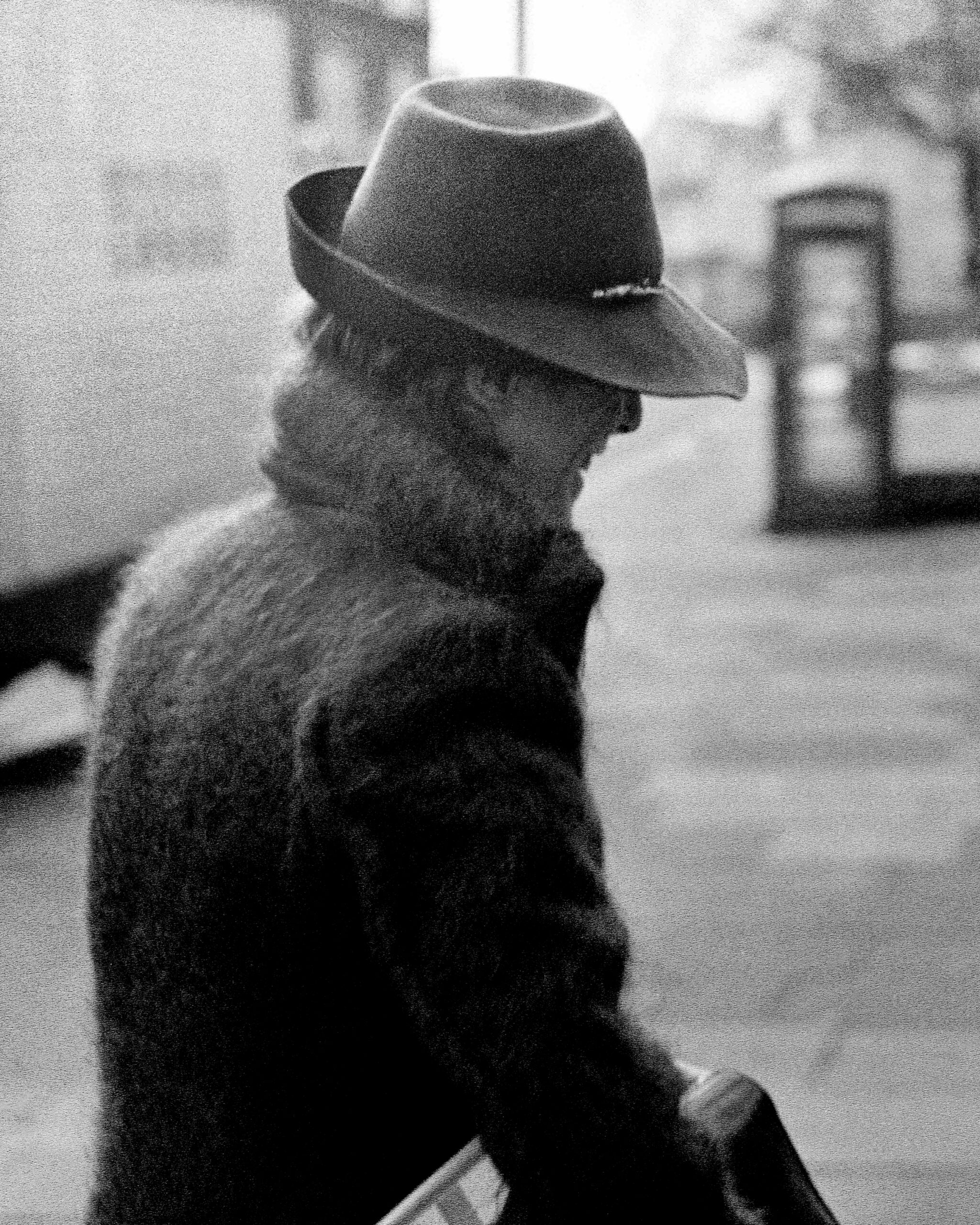
Having first been inspired by Jimmy Page in 1972, it was Bowie’s Ziggy Stardust show at the Hammersmith Odeon in 1973 that truly changed me. As the red velvet curtains opened, it felt like my imagination had been switched on for the first time. Bowie’s performance, part rock concert, part mime, with touches of Japanese kabuki, was unforgettable. In that moment, I thought, “This is the future. This is your future.” Mick Ronson, in sparkling breeches, looked every bit the rock hero, his golden Les Paul blazing under the lights as it tore through Moonage Daydream. The hikinuki technique, a swift costume change, was pulled off right at the song’s opening as unseen hands whipped away Bowie’s outfit to reveal a short silk kimono by Kansai Yamamoto. Kansai designed multiple costumes for David during the Aladdin Sane era, pushing his alien-like, androgynous persona into the cultural spotlight.
Aladdin Sane became the first ’70s album I owned, won during a dance contest at a small basement club across from Richmond station. I stepped onto the floor in a top hat with my girlfriend and danced like Jagger. That record opened the door to an age of bold album covers and adventurous music. One of its songs, Drive-In Saturday (1973), featured the wonderfully strange lyric, “Pour me out another phone.” The competition had been held in the same venue where The Rolling Stones had played a residency a decade before — a place so legendary that The Beatles had stopped by out of curiosity in 1963.
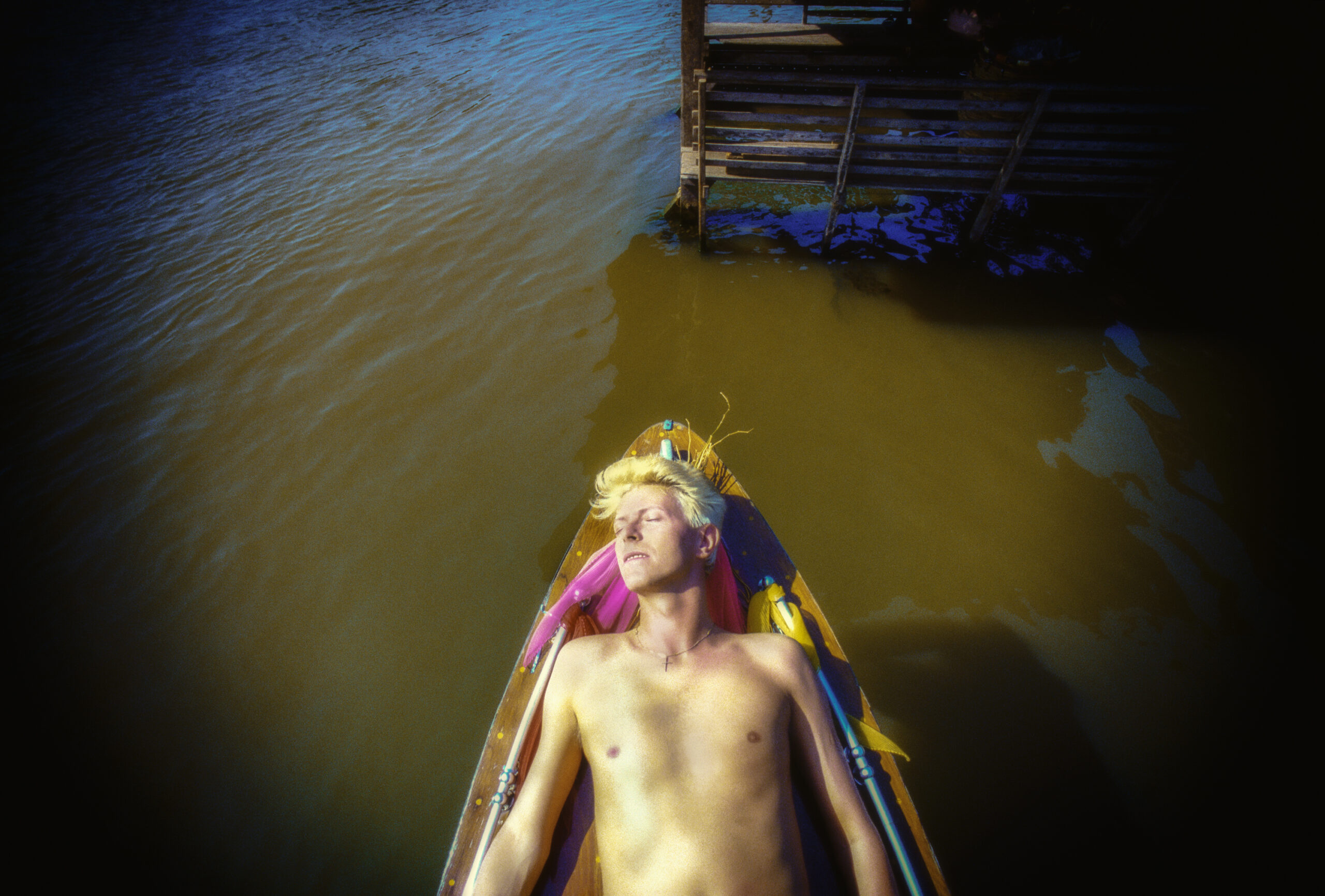
1983 Bowie Bangkok boat FINAL copy, Time out on a boat in Bangkok during the 1983 Serious Moonlight tour.
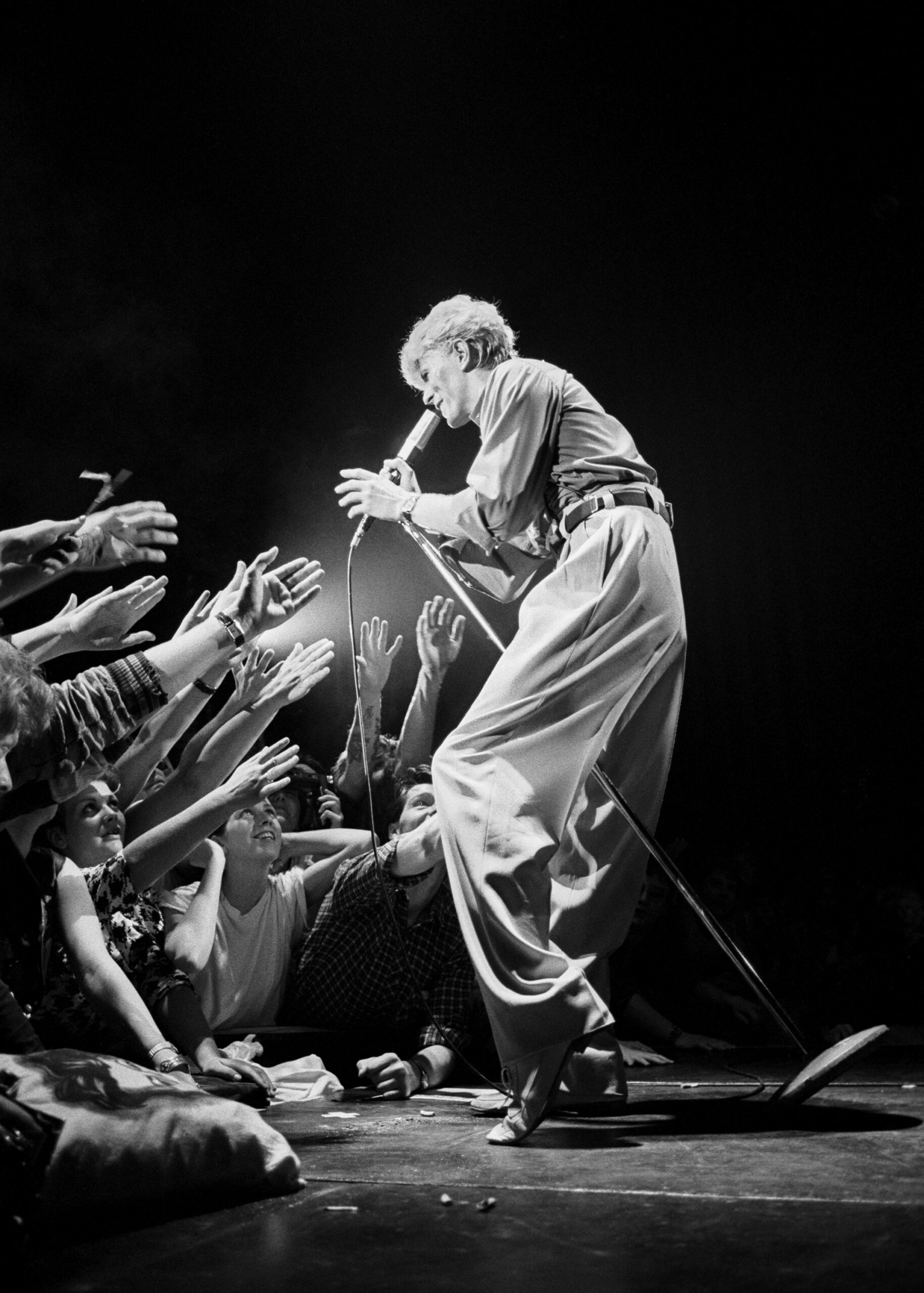
1983 Bowie Hammersmith, Bowie performing in June 1983 at the Hammersmith Odeon in London, a charity show for the Brixton Neighbourhood Community Association.
In May 1974, Bowie released his eighth studio album, Diamond Dogs. Every time I hear it, I’m taken back to that first quick meeting outside Olympic Studios. Just two weeks later, I set out on my own “Grand Tour” of Europe , a journey that would eventually lead to a decade of touring with some of the biggest British acts of all time, including Queen and The Rolling Stones, and two full years alongside David Bowie. By 1978, his earlier suggestion had come true: I was working for New Musical Express (NME), photographing Blondie, The Ramones, The Clash, Iggy Pop, and at my request Bowie himself, performing at Newcastle City Hall. Those were my first professional shots of The Thin White Duke. Years later, Duran Duran’s John Taylor would recall seeing those pictures in NME during his school bus rides. Bowie’s Madison Square Garden show in 1983 was another unforgettable moment, with Andy Warhol, Keith Richards, Yoko Ono, and Tina Turner all there. Mick Jagger, despite being shy about turning 40, posed for a cheerful shot with David, which later appeared in Newsweek.
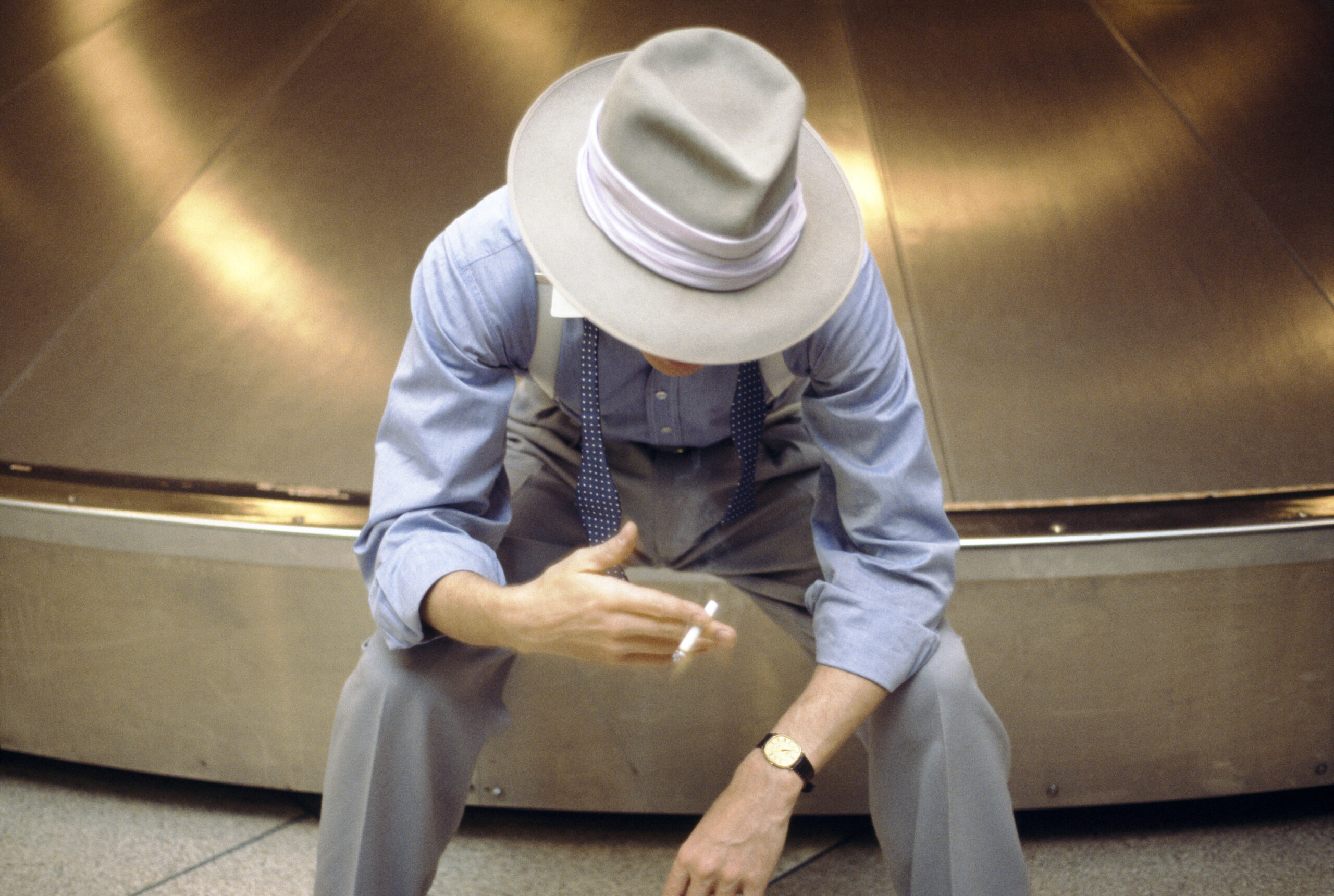
1983 Bowie airport, Chilling at the airport while on his 1983 Serious Moonlight tour.
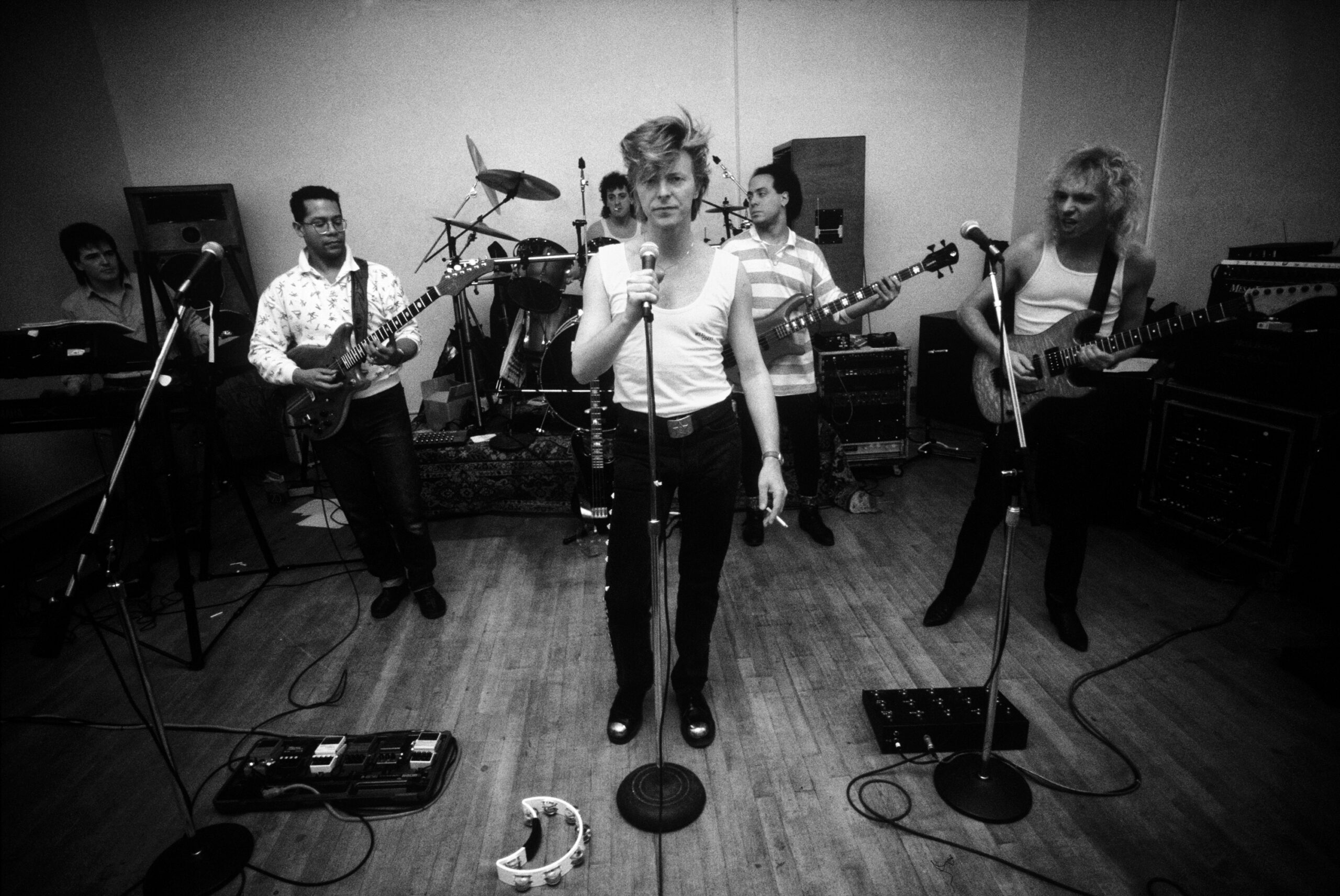
1987 Bowie rehearsal NYC, David Bowie, New York City rehearsals, 1987.
David ended up doing two nights at “The Garden,” though promoter Ron Delsener the first to book him in New York back in 1972 believed he could have easily surpassed Elton John’s seven-night record. On the Serious Moonlight Tour, I photographed his first meeting with Michael Jackson backstage at The Forum in Los Angeles. In Paris, during a show at the Auteuil Hippodrome, someone tossed a pair of glittery red shoes on stage. David picked them up and incorporated them into Let’s Dance, twirling as if with an invisible partner. At Milton Keynes Bowl in England, he used a parasol during China Girl. Before 1983, Bowie had played only one outdoor gig, so European promoters were hesitant to book stadiums. That changed fast after 250,000 ticket requests poured in for just 44,000 seats at one UK venue. Suddenly, every promoter wanted a stadium show.
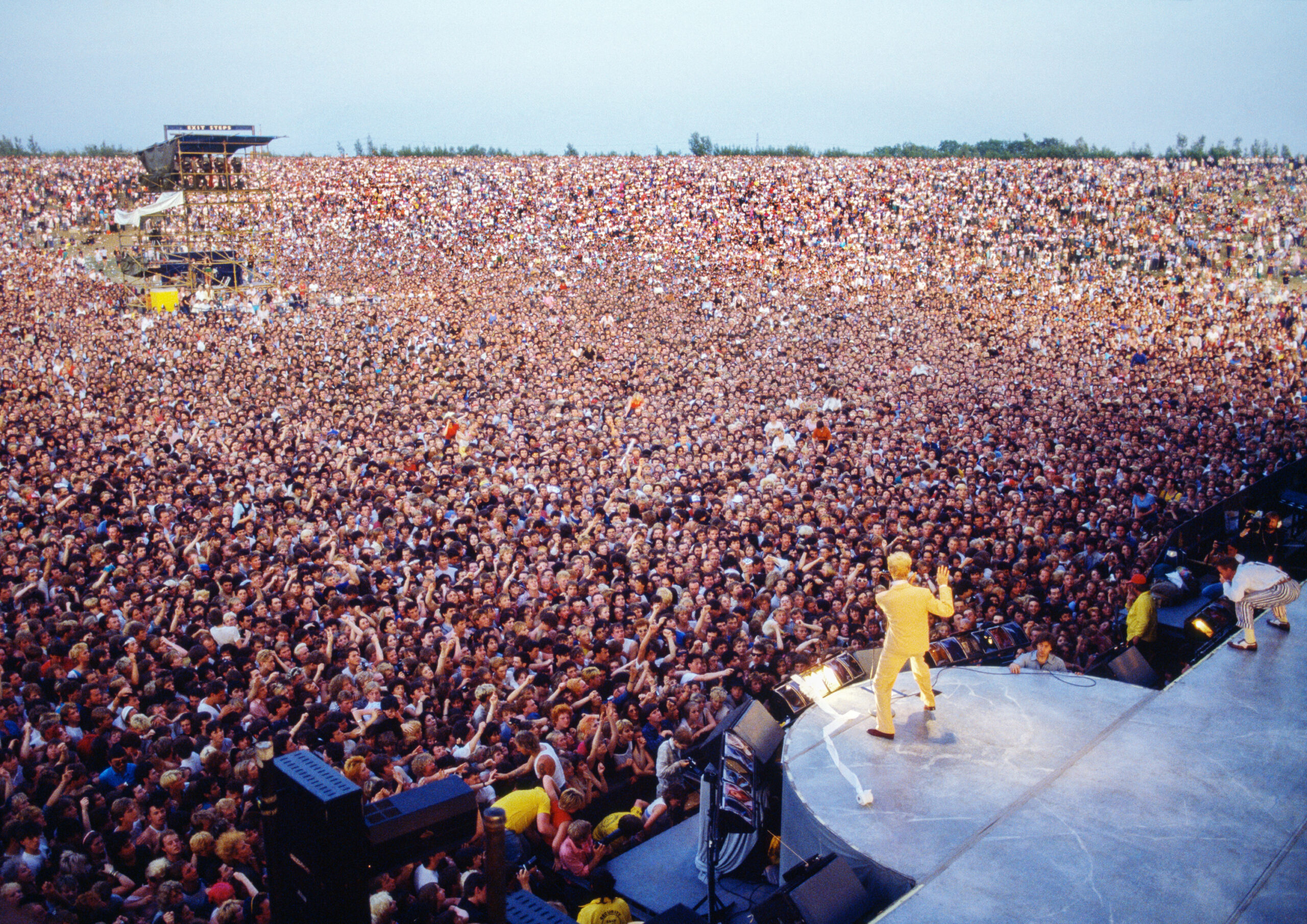
1983 MK 02, Bowie performing for 175,000 fans over three days at the Milton Keynes Bowl in 1983, as part of the Serious Moonlight tour.
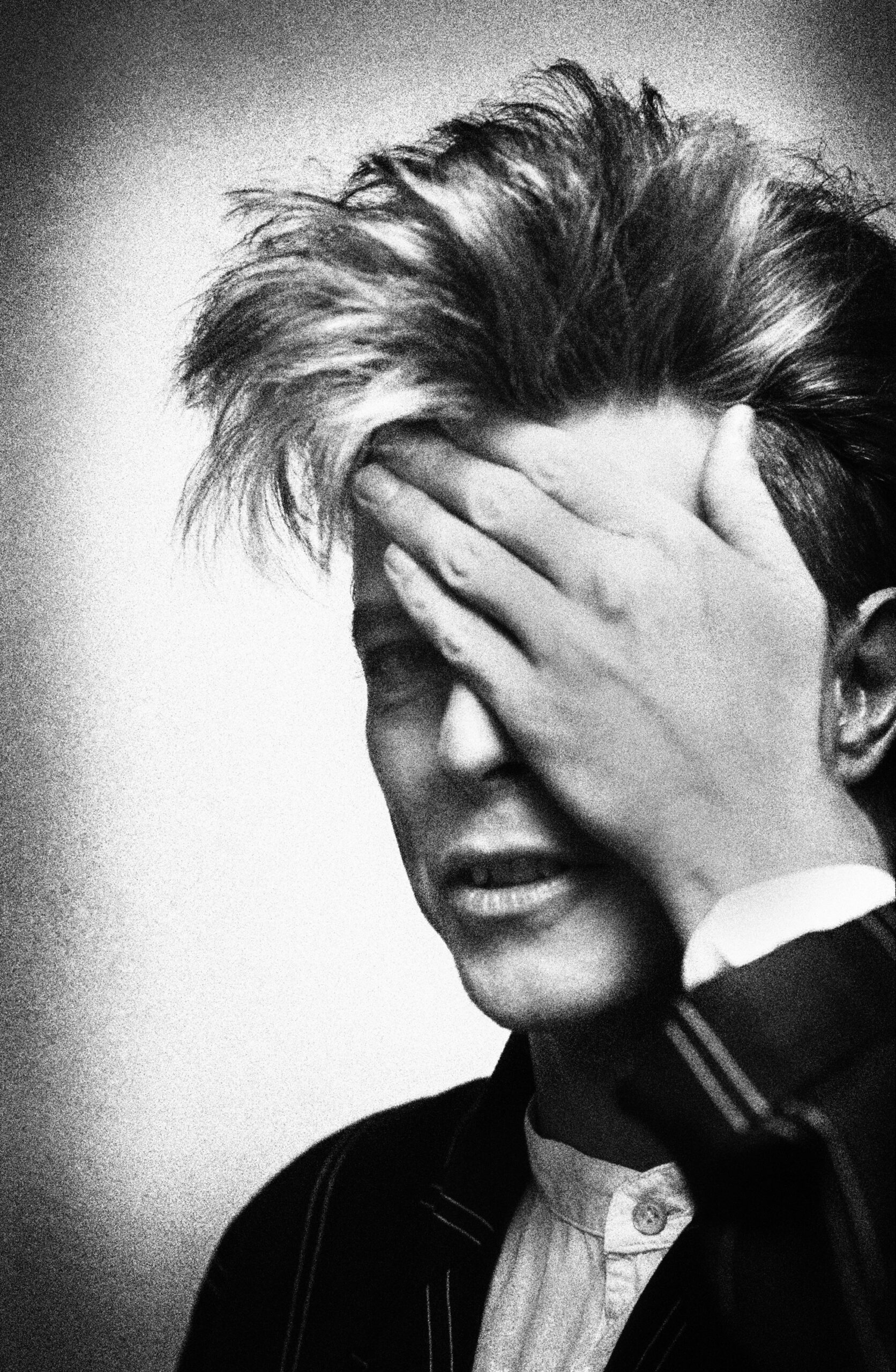
1987 Amsterdam, during filming of a Pepsi advert with Tina Turner.
In Gothenburg at Ullevi Stadium, David bowed low to the stage a nod to Steve Strange, who appeared in his Ashes to Ashes video. On June 20, 1987, ten years before Princess Diana’s passing in Paris, I invited my father and youngest brother Declan to see the Glass Spider Tour at Wembley Stadium. We took a walk through the crowd to the sound booth, which gave the perfect view back toward the stage. I eventually returned alone to the dressing rooms, not knowing Princess Diana was on her way. Security cleared the area as she arrived. David personally introduced her to each band member. Promoter Harvey Goldsmith, who knew Diana well, encouraged me to ask for a photo. So I did. She smiled and asked, “Do you really think he’d want to?” I replied, “I think he would.”
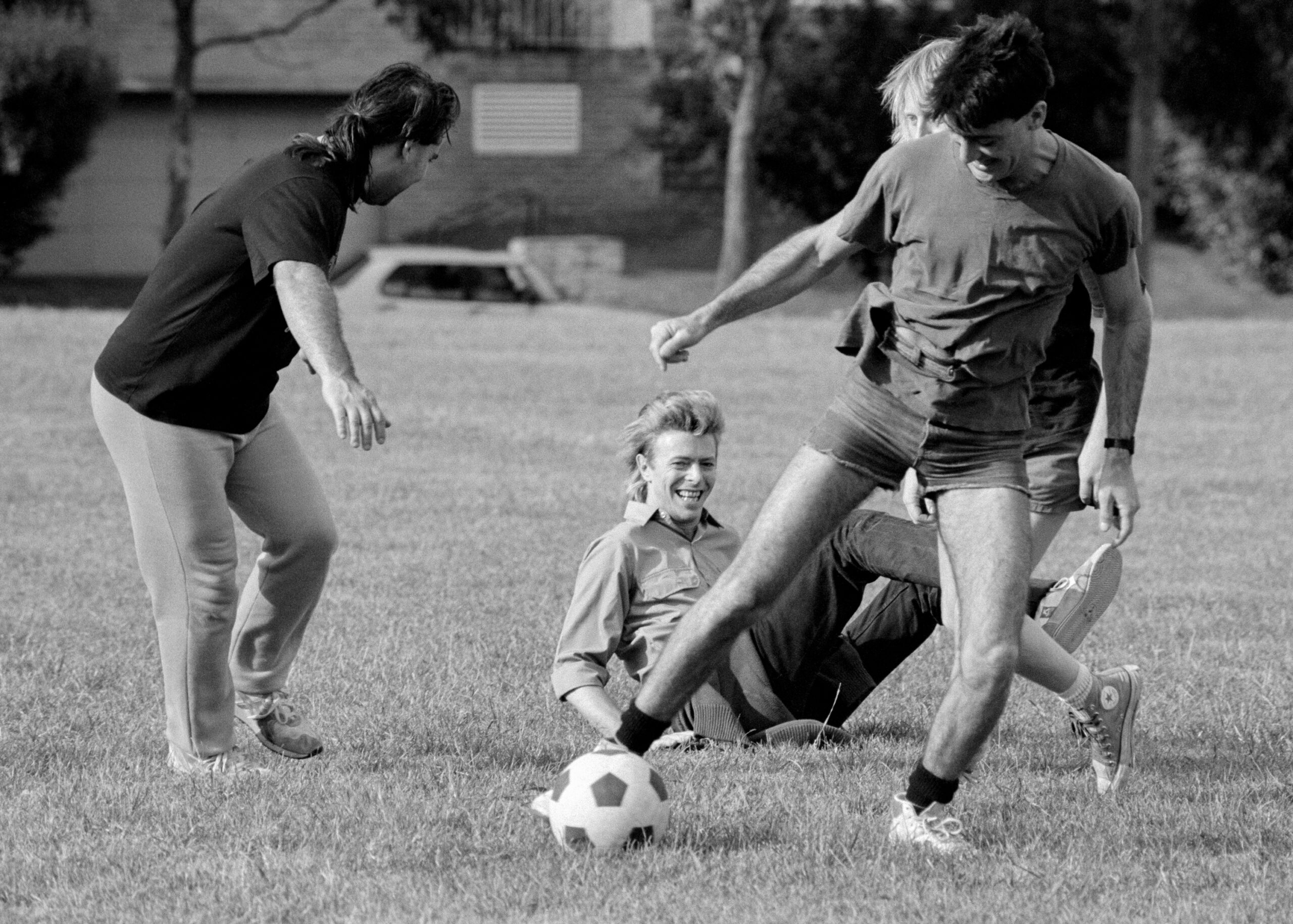
1987, Playing football with musicians and crew members in Melbourne, Australia.
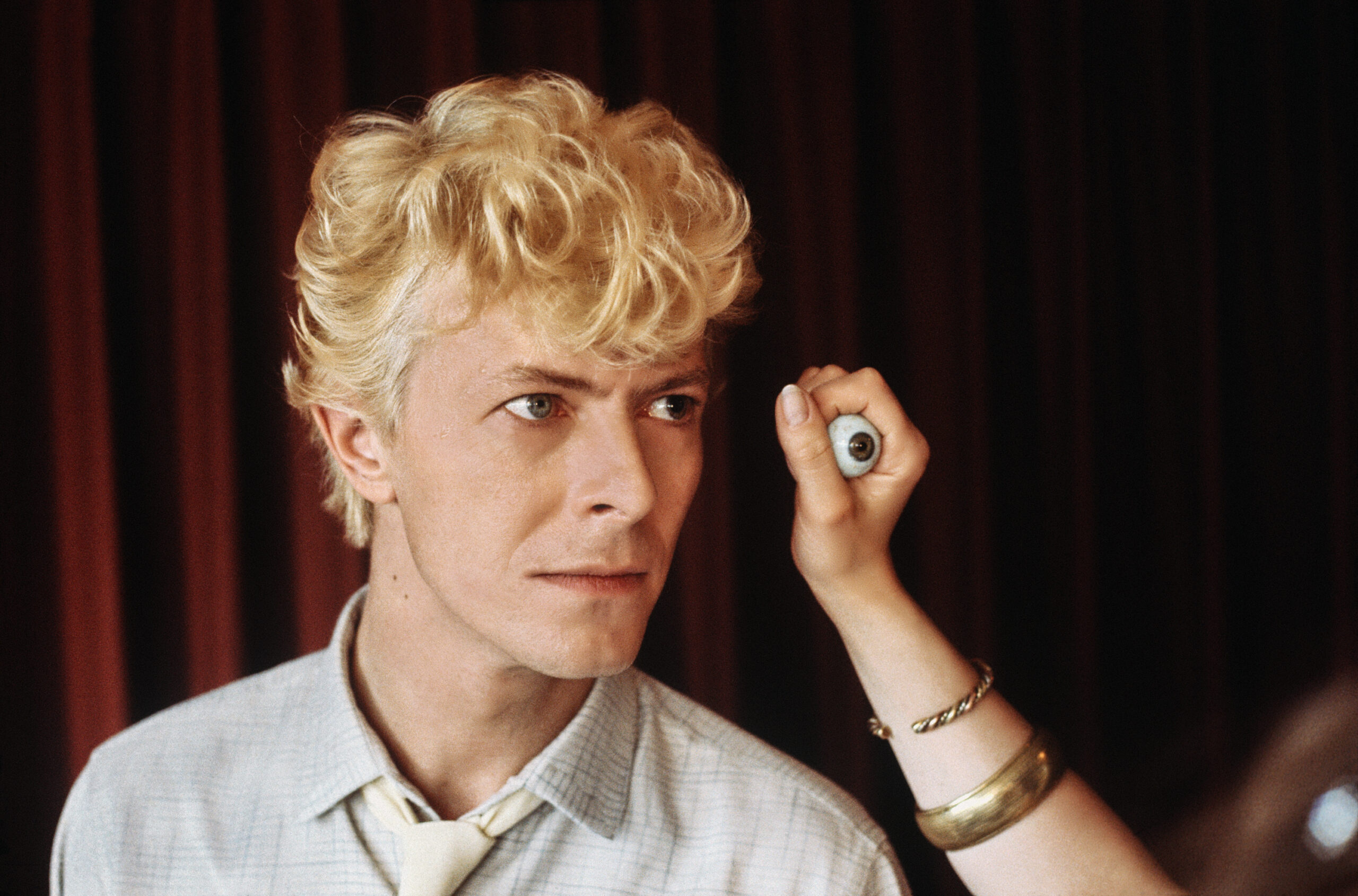
1983.0167.4010-Recovered, Bowie poses for a designer at Madame Tussauds in London, while she colour-matches his eyes for his waxwork.
By 1990, David was hosting a press event at London’s Rainbow Theatre to announce the Sound+Vision Tour. I came with the aim of snapping a casual portrait before he faced the press. The photos captured his effortlessly stylish, mischievous side. It had been 17 years since that Ziggy Stardust show that first inspired me to pick up a camera. I told him, “It’s you that made me want to become a photographer.” He grinned and said, “I bet you say that to everyone. You’ll probably tell Bono tomorrow.” Ever the humble Englishman, David had a way of brushing off praise.
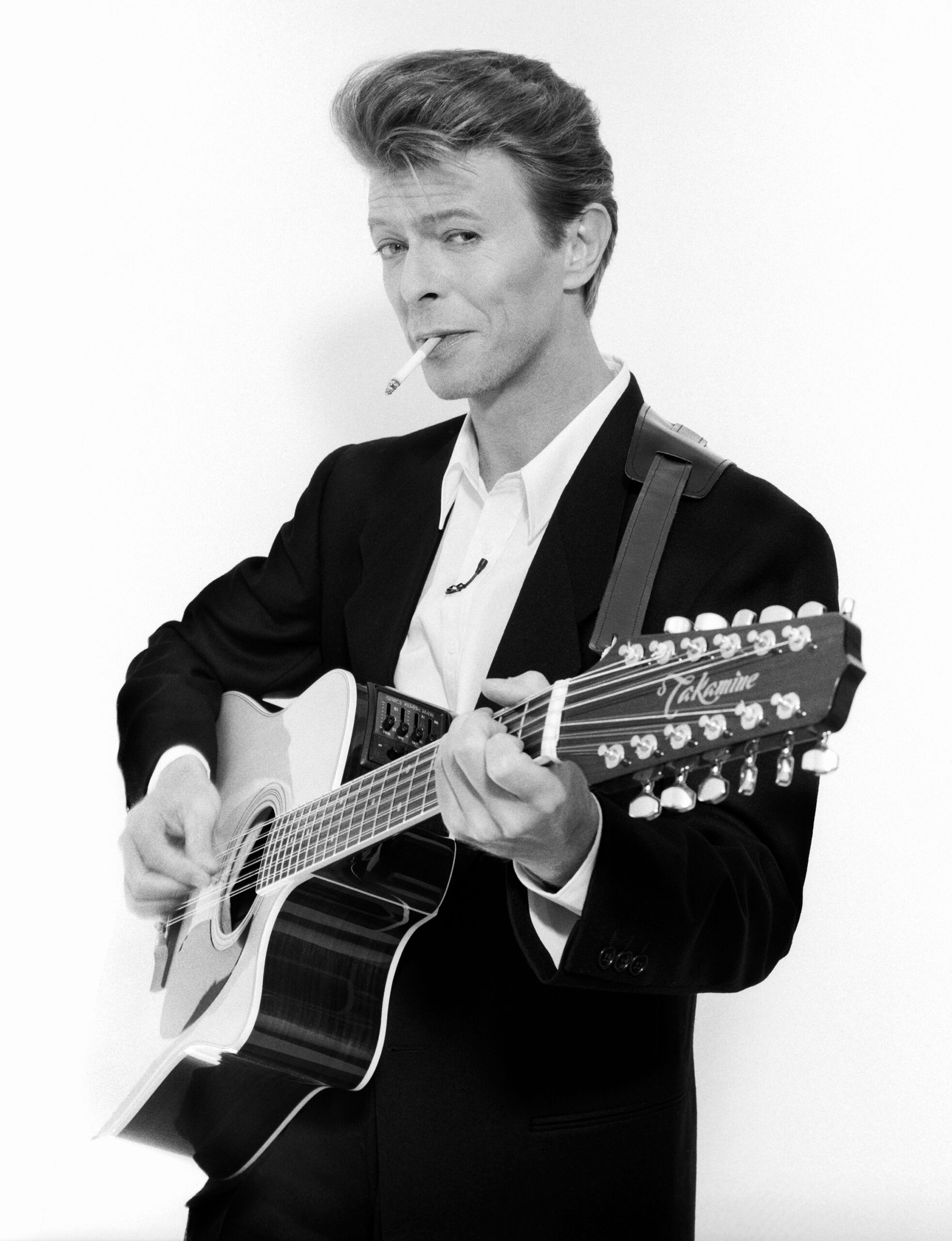
1990 Bowie Rainbow Theatre, Bowie backstage at London’s Rainbow Theatre, before his 1990 press conference announcing the Sound+Vision tour.
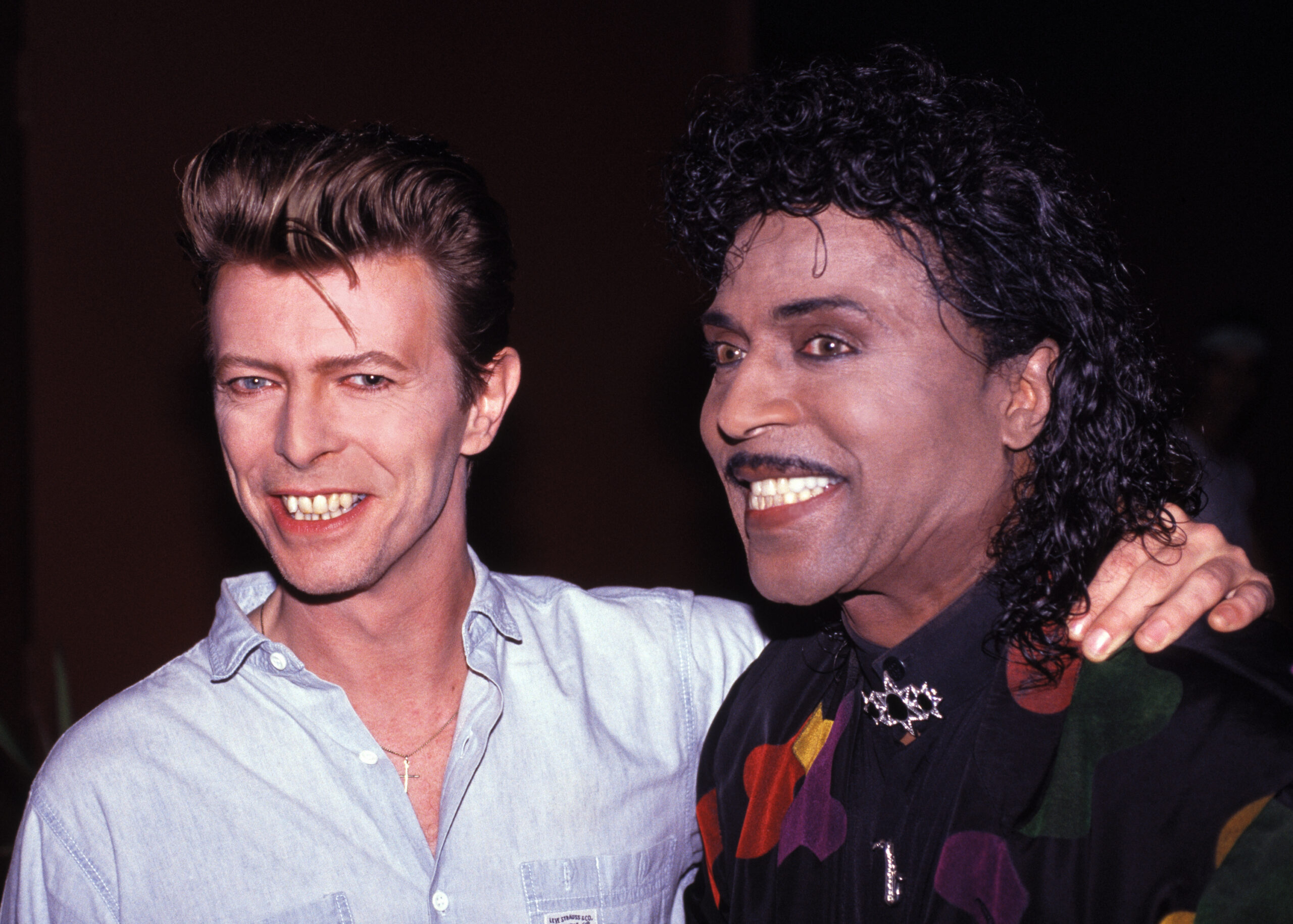
1990 DB19 copy FINAL, David Bowie and Little Richard, 1990.
I dropped by a few Sound+Vision shows in the U.S. and Europe, including a scorching day at Milton Keynes Bowl in August where the temperature neared 100 degrees Fahrenheit. I took aerial shots of the crowd from a helicopter, then introduced my father to David backstage. In classic Bowie style, he greeted him warmly with, “Hello Dad!”
David’s death left me deeply saddened something I’d feared for years before it happened. I would often imagine visiting him at his Lafayette Street apartment in Manhattan. One night, lying in bed with my nine-year-old son Rory, we listened to Blackstar. He asked, “Will I ever get to meet David?” and I assured him, “I’m sure you will.”
But early the next morning, on January 10, 2016, David passed away in New York City 38 years after our first meeting in Barnes. Mick Jagger paid tribute on Twitter with a photo I’d taken of the two of them in London, writing, “We had so many good times together. He was my friend, I will never forget him.”
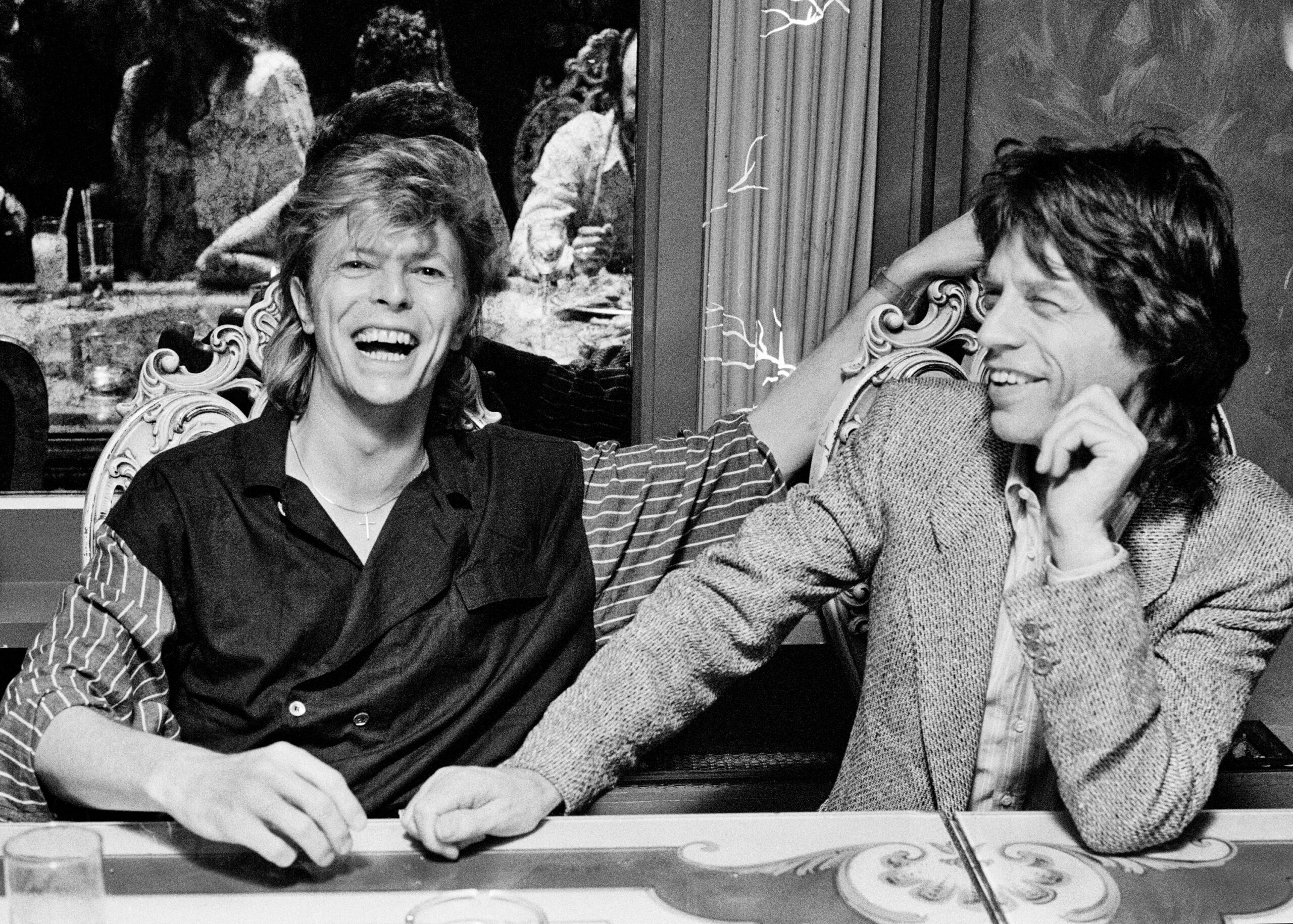
1987 Bowie & Jagger Soho, David Bowie and Mick Jagger at ‘Bill Stickers’ Club, 1987.
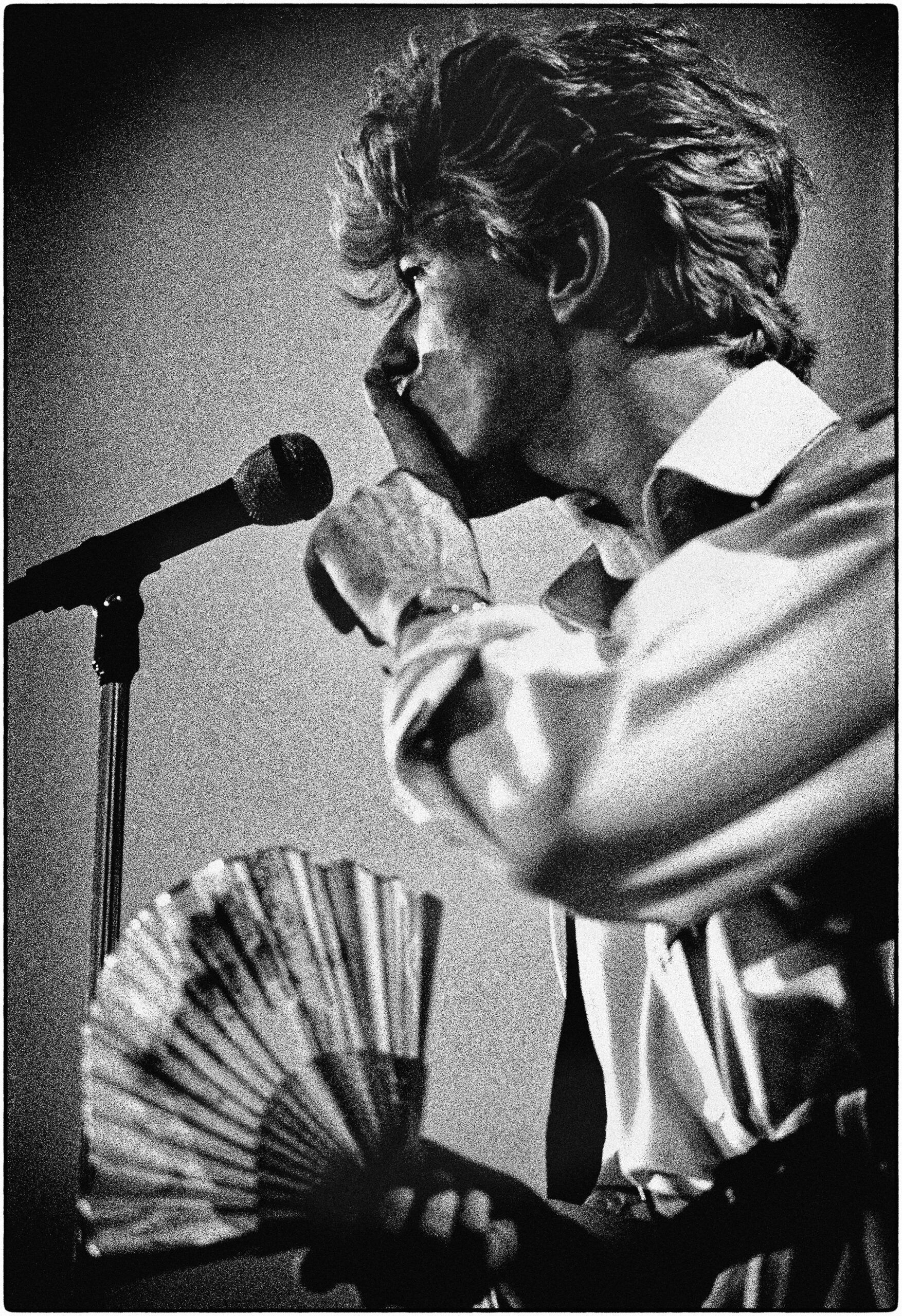
1983 Performing China Girl on the Serious Moonlight tour.

